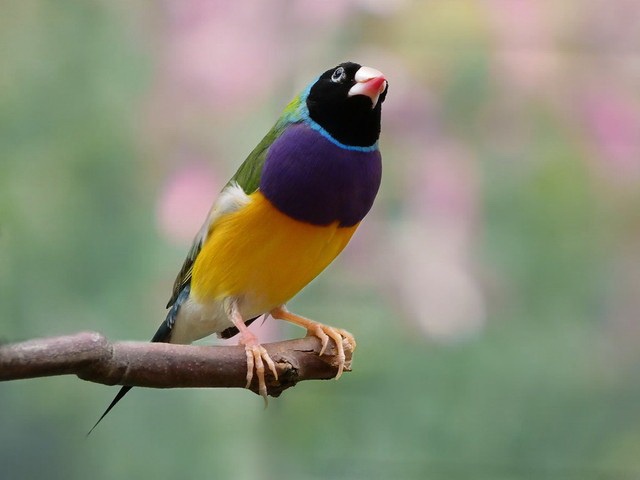Black-headed female takes the lead in Gouldian finch
When Gouldian finches have to drink, not every bird is willing to leave the safe trees first. There is a pattern in the order in which they venture to a waterhole, Andrias O’Reilly and colleagues show.
Drinking water is a perilous adventure for the Gouldian finch, a songbird from north-western Australia. It is a colourful species. If the birds are on the ground near a creek or pond, birds of prey will spot them easily, so they are less safe there than in the trees. But they have no choice: they have to drink. Once a day, early in the morning, they take the risk, coming in flocks. Some of them are more courageous than others, as Andrias O’Reilly and colleagues saw.
Personality
That was already known from experiments in the lab. Gouldian finches have different head colours; most birds (70 percent) have a black head, others (30 percent) a red one and a few (less than 1 percent) a yellow one. Research had shown that the colour is linked to personality: animals with a red head are more aggressive, whereas black-headed birds are more explorative and more courageous. The researchers wondered if this is also the case in the wild. If it is, a difference in courage should be visible in a risky activity, such as drinking water.
So, they observed the birds at their daily drinking party and noted what type of bird descended first to the waterhole, taking the greatest risk. They conducted their research at the end of the breeding season, when the young had fledged.
Apparently, Gouldian finches are no heroes. They will not land on the ground to drink untill other birds are present at the waterhole. If no bird is there, they will remain in the trees and wait for other birds to appear.
Risk
Only in that case, they dare as well. And then, the black-headed birds are most likely to take the lead, as it turned out. That is in agreement with what was found in the lab. The black-headed birds run less risk because they are less conspicuous than the red-headed ones, the explanation is.
Young birds have not yet full colours and are even less conspicuous. Still, juveniles let the adult birds precede; probably the young birds are more cautious because they have little experience.
At the start of the research period, mainly females are the first birds to descend to the water. Fathers primarily care for the young for a while after fledging; during this period, males will stay with the cautious young, so females have to take the lead. And the black-headed females will take it.
Willy van Strien
Photo: Gouldian finch, black-headed male. Linda de Volder (via Flickr; Creative Commons CC BY-NC-ND 2.0)
Source:
O’Reilly, A.O., G. Hofmann & C. Mettke-Hofmann, 2019. Gouldian finches are followers with blackheaded females taking the lead. PLoS ONE 14: e0214531. Doi: 10.1371/journal.pone.0214531
